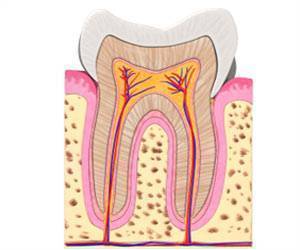Tooth enamel is the hardest substance of our body, composed entirely of the mineral apatite deposited on a substrate of three unique enamel matrix proteins.

Tooth enamel is the hardest substance produced by our body, composed almost entirely of the mineral apatite (calcium phosphate) deposited on a substrate of three unique enamel matrix proteins.
Like other land vertebrates we only have teeth in the mouth, but certain fishes such as sharks also have "dermal denticles" -- little tooth-like scales -- on the outer surface of the body.
In many fossil bony fishes, and a few archaic living ones such as the gar (Lepisosteus) from North America, the scales are covered with an enamel-like tissue called "ganoine".
"It seems that enamel originated in the skin, and only colonized the teeth at a later point," said Per Ahlberg, professor of evolutionary organismal biology at Uppsala University.
Researchers investigated the genome of Lepisosteus and found that it contains genes for two of our three enamel matrix proteins -- the first to be identified from a ray-finned bony fish.
Advertisement
But where did enamel originate -- in the mouth, in the skin?
In Psarolepis the scales and the denticles of the face are covered with enamel, but there is no enamel on the teeth. In Andreolepis only the scales carry enamel.
"Psarolepis and Andreolepis are among the earliest bony fishes, so we believe that their lack of tooth enamel is primitive and not a specialization," Ahlberg explained.
The study appeared in the journal Nature.
Source-IANS











